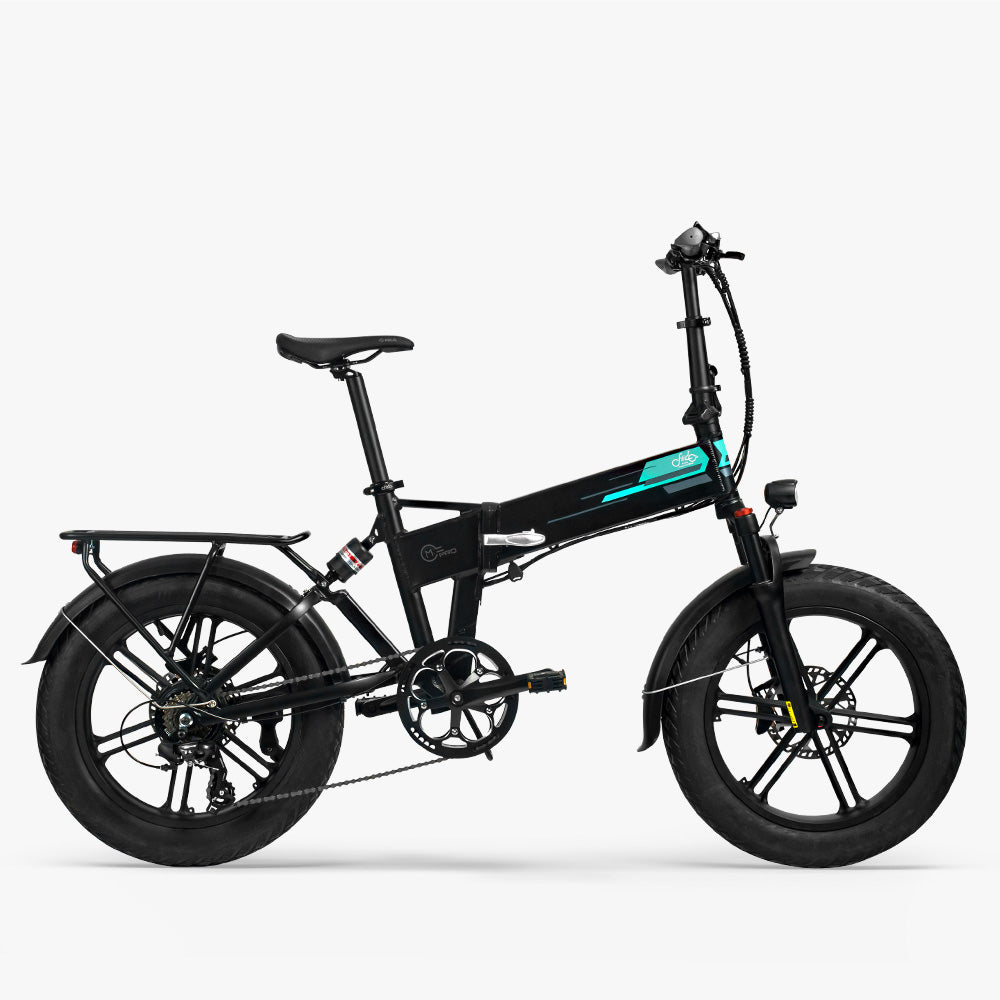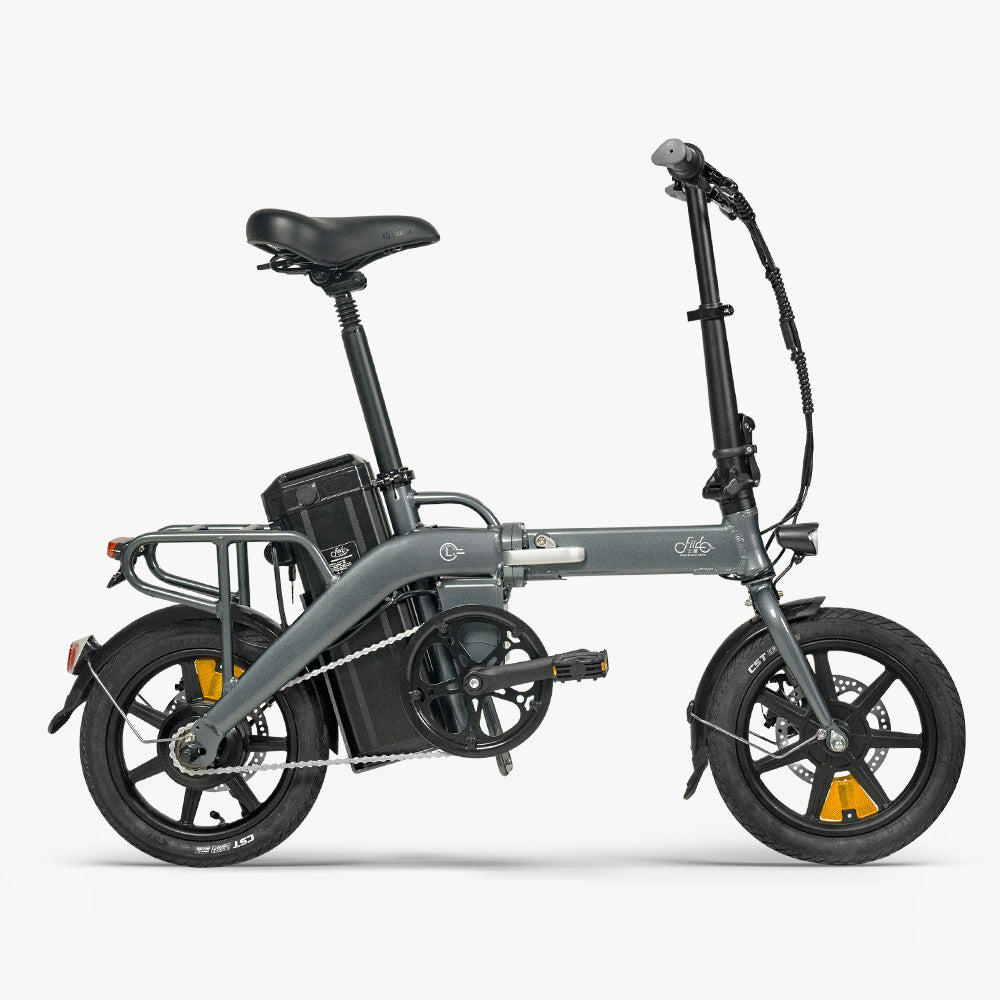Have you ever found yourself stuck on a ride, whether on an electric bike or in your car, with a tire that just won't inflate? It’s one of those frustrating moments that can throw a wrench in your day, no matter where you're headed. But don’t worry! In this article, we’ll dive into why your tire isn’t getting air, and we’ll give you the solutions you need to get rolling again. Plus, we’ll recommend two amazing Fiido electric bikes that promise a smooth, worry-free ride every time!

How to Fix the Issue When Your Tire Won’t Inflate
1. Check the Valve Core
Start by inspecting the valve core for any visible damage. Gently press on the valve core; if you hear air escaping, it may be damaged. Replacing the valve core is often an effective solution.
2. Inspect the Tire Surface
If there’s visible damage or cracks on the tire, you should repair or replace it as soon as possible. Small cracks can be patched using a tire repair kit, but significant damage will require a tire replacement.
3. Check the Inflating Equipment
Ensure that your inflating equipment is functioning properly. A faulty pressure gauge or loose connections can affect inflation. Verify that your pump is compatible with your tire valve and keep the equipment clean.
4. Use the Right Inflating Pump
Make sure that you’re using the correct pump for your electric bike or other vehicle. Electric bikes, for example, may require a specialized pump with a specific valve type (such as Presta or Schrader). Be sure that the pump you use matches the tire valve type.
5. Inflate Tires in a Warmer Environment
In cold weather, try moving your vehicle to a warmer space before inflating the tire. Cold temperatures cause air to contract, which leads to low tire pressure. Inflating your tire in a warmer environment can improve inflation efficiency.
 Common Causes for Tires Not Inflating
Common Causes for Tires Not Inflating
There are several reasons why your tire may not be inflating properly:
1. Damaged Valve Core
The valve core is the essential component that controls the air intake and release in your tire. If the valve core is damaged or worn out, it can lead to air leakage, causing difficulty in inflation. Minor damage might not result in full air loss, but it can make inflation difficult.
2. Tire Damage or Wear
Visible damage such as punctures, cracks, or signs of wear on the tire’s surface can cause air leakage. In severe cases, the tire may not maintain air pressure, making it impossible to inflate properly. This is often the most common root cause of inflation problems.
3. Faulty Pressure Gauge
Sometimes, the issue lies with the inflating equipment itself. A malfunctioning pressure gauge or a loose connection with the inflating pump can make the inflation process frustrating and ineffective.
4. Mismatched Inflating Pump
Not all pumps are compatible with all types of tires. For instance, electric bikes may use specific valve types that regular car pumps cannot match, preventing successful inflation.
5. Environmental Factors
Temperature changes can also affect tire pressure. In colder weather, the gas in the tire becomes denser, causing the pressure to drop and making it harder to reach the desired inflation level.
How to Inflate a Tire
To properly inflate a tire, follow these steps:
- Choose the Right Pump: Ensure that you’re using the correct pump compatible with your tire’s valve type (Presta, Schrader, etc.).
- Check the Recommended Pressure: Look for the recommended pressure range printed on the side of the tire or refer to your vehicle’s manual.
- Secure the Valve Stem: Attach the pump nozzle firmly to the valve, ensuring no air escapes.
- Inflate Gradually: Begin inflating the tire slowly, checking the pressure regularly using a gauge to ensure it doesn’t exceed the recommended level.
- Check for Leaks: Once the tire is inflated, remove the pump nozzle and check for any air leaks around the valve.
If you’re unsure or inexperienced, it’s always a good idea to consult an expert.
The Impact of Insufficient Tire Inflation on the Vehicle
Insufficient tire inflation can have several negative effects on your vehicle:
- Reduced Fuel Efficiency: Underinflated tires cause more friction with the road, which increases rolling resistance and can significantly lower fuel efficiency.
- Premature Tire Wear: A lack of proper inflation leads to uneven wear on your tires, which reduces their lifespan.
- Poor Handling and Safety: Tires that are underinflated do not provide optimal traction, making the vehicle harder to control and increasing the risk of accidents.
- Risk of Tire Damage: Riding with insufficient air pressure makes the tire more susceptible to punctures, blowouts, and other damage.
Therefore, maintaining proper tire inflation is not just about convenience—it's crucial for both safety and vehicle performance.

How to Prevent Tire Inflation Issues
1. Regularly Check Tire Pressure
Checking your tire pressure regularly is key to maintaining tire performance. Both underinflation and overinflation can damage your tire, so ensure your tire pressure stays within the manufacturer’s recommended range.
2. Repair Tire Damage Promptly
If you notice any tire damage, such as cracks or punctures, repair it as soon as possible to prevent the issue from worsening.
3. Invest in High-Quality Tires
Opt for high-quality tires, especially if you’re using an electric bike. High-quality tires offer better traction, durability, and comfort, which can reduce the likelihood of inflation issues. If you're looking for more robust options, consider a fat tire electric bike, as these are specifically designed for better stability and comfort, especially in rugged terrain.
4. Choose the Right Inflating Equipment
Ensure you have a suitable pump, and regularly check that it’s working correctly. For electric bikes, a high-quality, compact electric pump that supports high-pressure inflation can make the process more efficient.
Two Recommended Fiido Electric Bikes
For electric bike users, regularly checking and maintaining tire pressure is crucial for a smooth and safe ride. Fiido electric bikes are known for their high performance, durable design, and comfort, making them an ideal choice for riders. Below are two recommended models that offer excellent features and experiences:
1. Fiido M1 Pro Electric Bike
The Fiido M1 Pro fat tire electric bike is an electric mountain bike that is perfect for both off-road adventures and city commuting. It features a powerful electric drive system and durable tires that can handle various terrains, making it suitable for challenging conditions such as hills, muddy paths, or rugged roads. With its high-quality pressure regulation system, it ensures smooth inflation and longer-lasting tire performance, providing excellent traction and extended range.
Fiido M1 Pro Fat Tire Electric Bike
The most cost-effective fat tire ebike for off-road adventures.
- Highlights: Powerful electric drive system, suitable for all terrains; superior performance for long-range cycling; high-quality tires and pressure management.
- Ideal Use: Off-road cycling, city commuting, long-distance travel.
2. Fiido L3 Electric Bike
Fiido L3 long range electric bike is a stylish and high-performance electric city bike designed specifically for urban commuting. It features optimized tire design that offers a smooth, comfortable ride with excellent grip. The L3 is equipped with a high-performance electric drive system and a smart battery, making it perfect for daily city rides and short-distance trips. Its lightweight frame and efficient tire inflation system make it easy to handle in urban environments, ensuring a hassle-free experience.
Fiido L3 Long Range Electric Bike
Longest Range Folding Electric Bike under €1000
- Highlights: Stylish, lightweight design, ideal for city rides; intelligent battery system for long-lasting range; high-quality tires that ensure stable grip.
- Ideal Use: City commuting electric bike, daily transportation, short-distance rides.
Whether you're riding in the city or exploring the outdoors, Fiido electric bikes provide superior performance and comfort. Regularly checking tire pressure will ensure that every ride is as enjoyable and safe as possible.
It's Not Just a Tire Pressure Problem
Sometimes, issues with tire inflation may not just be about the tire pressure itself. If you’ve ruled out common problems such as valve damage or pump incompatibility, and the problem persists, it’s time to reach out to a professional. It’s recommended to contact a local auto repair expert for consultation. Additionally, if you’ve purchased a Fiido electric bike, you can always consult our after-sales team for assistance. You can reach us at support@fiido.com for expert guidance and support.
Conclusion
The issue of tires not inflating might seem simple, but if not addressed promptly, it can negatively impact your travel convenience and safety. We hope that the advice provided in this article helps you identify and fix inflation problems efficiently. Additionally, the recommended Fiido electric bikes will deliver exceptional riding experiences, whether you're commuting or embarking on an outdoor adventure.















